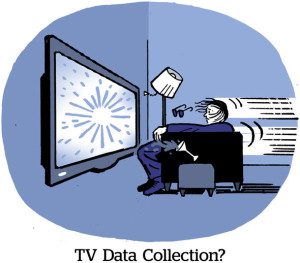As buyers finalize their TV upfront deals and consider which currencies to use, they can measure the progress of three major alternate currencies.
Comscore, iSpot and VideoAmp all reaffirmed last year’s full certification and currency-grade readiness, according to the broadcaster-backed joint industry committee (JIC)’s mid-term audit released Thursday.
The audit also expanded Comscore’s status to include approval for personified demographics, one of three core deal types that the JIC evaluates within its certification review process. The other two are total households and advanced audience segments.
In the JIC’s new “Guidelines for Transactability” report, which was made publicly available the same day as the audit results, the organization also makes specific recommendations for what each company can improve on in future tests.
For example, the report mentions that all three companies need additional refinements on their younger demographics and encourages VideoAmp to strengthen some of its transparency and formatting consistency, among other things.
Setting the finer details, however, Comscore, iSpot and VideoAmp have all maintained a baseline of transactability according to the JIC’s criteria, which will give media buyers and sellers a better understanding of (and stronger trust in) each individual company’s offerings.
More importantly, all three companies are on the same playing field with regard to the three different deal types JIC tests for, and they can withstand “apples to apples comparisons,” said Frank Friedman, chief data and analytics officer and head of cross-platform measurement at Comscore.
What’s the difference?
JIC certification is primarily meant to establish whether a measurement company’s product is transactable for specific real-world use cases.
This distinction is one of the major things that sets JIC apart from the Media Rating Council (MRC), an independent regulatory body that exists to make sure measurement companies adhere to the methodologies they say they do.
Both organizations are important to the advertising industry for different reasons, said Friedman, who previously sat on the MRC’s TV committee.
But while MRC accreditation takes years to achieve and can be revoked – just look at what happened to Nielsen in 2021 – the process to achieve JIC certification is meant to be quicker and more adaptable.
Repeating the process
The JIC grants currency certification status on the basis of two-year terms, meaning that companies will have to apply for recertification at the end of those two years. The most recent term, which is also the first since the JIC’s founding two years ago, officially started in January 2024 and will continue until December 2025.
However, like most of the larger tech industry, measurement companies typically adhere to an annual product upgrade cycle, which is why regular mid-term audits will be especially important for the JIC going forward.
“The process itself needs to reflect the fact that the products are evolving,” said Travis Scoles, EVP of advanced advertising at Paramount and chairman of the JIC Board of Directors.
Scoles told AdExchanger that he expects the JIC committee will be having “heavier” conversations about how the guidelines might evolve further next year, once the first term is officially up.
Whether any new contenders will apply for certification status during that time is anyone’s guess, however.
At the start of its very first review process in 2023, the JIC originally sent requests for information to six companies, including the three that were eventually certified. Now, though, said Scoles, it’s “only a few of these folks are really making a real run” at creating a transactable currency, in no small part because of the huge investments required.
“Before you can start to sell your first guarantee on an underlying currency, it has to be built out to a degree where people feel comfortable transacting against that,” said Scoles. “So you end up in sort of a chicken-or-egg thing.”
Alternatives to the alternative
Of course, in every conversation about media currency and measurement, there’s always a Nielsen-shaped elephant in the room to contend with.
For Scoles, Nielsen’s MRC-approved decision to integrate first-party streaming data into its existing panel last year is proof that the “alternative” moniker should be done away with entirely. After all, if the legacy contender is using big data the same way all its competitors are, then those competitors can’t use big data to claim that they’re different anymore.
“If you look at the automotive industry, it’s not like people say there’s Ford and there’s alternative Fords,” Scoles said.
But, unlike all the JIC-certified currencies on the market, Nielsen does not allow for its data to be directly compared to that of other providers, said Comscore’s Friedman, which he views as a fundamental transparency problem. And because many media buyers and sellers are already transacting on Nielsen, they’re still hesitant to go elsewhere and deal with all the friction that comes with adopting a new system.
“All these certifications, all these accreditations are really, really important, but if they don’t actually cause a change in how we operate, how effective are they really?” said Comscore’s Friedman.
“If we’re not in a position where we’re allowed to put those data sets side by side and actually show them, we’ll be interrupted ourselves,” he added.

















